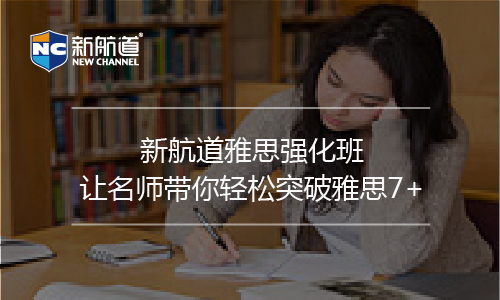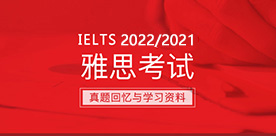剑6test2雅思阅读passage3原文+题目+答案解析
2017/3/31 11:16:55来源:新航道作者:新航道
摘要:上海新航道雅思小编今天给大家带来了剑6test2雅思阅读passage3原文+题目+答案解析,希望对同学们的雅思备考提供帮助。
新航道雅思小编今天给大家带来了剑6test2雅思阅读passage3原文+题目+答案解析,希望对同学们的雅思备考提供帮助。
剑桥雅思6test2passage3阅读原文+题目+答案解析
Numeration
One of the first great intellectual feats of a young child is learning how to talk, closely followed by learning how to count. From earliest childhood we are so bound up with our system of numeration that it is a feat of imagination to consider the problems faced by early humans who had not yet developed this facility. Careful consideration of our system of numeration leads to the conviction that, rather than being a facility that comes naturally to a person, it is one of the great and remarkable achievements of the human race.
It is impossible to learn the sequence of events that led to our developing the concept of number. Even the earliest of tribes had a system of numeration that, if not advanced, was sufficient for the tasks that they had to perform. Our ancestors had little use for actual numbers; instead their considerations would have been more of the kind Is this enough? rather than How many? when they were engaged in food gathering, for example. However, when early humans first began to reflect on the nature of things around them, they discovered that they needed an idea of number simply to keep their thoughts in order. As they began to settle, grow plants and herd animals, the need for a sophisticated number system became paramount. It will never be known how and when this numeration ability developed, but it is certain that numeration was well developed by the time humans had formed even semi-permanent settlements.
Evidence of early stages of arithmetic and numeration can be readily found. The indigenous peoples of Tasmania were only able to count one, two, many; those of South Africa counted one, two, two and one, two twos, two twos and one, and so on. But in real situations the number and words are often accompanied by gestures to help resolve any confusion. For example, when using the one, two, many type of system, the word many would mean, Look at my hands and see how many fingers I am showing you. This basic approach is limited in the range of numbers that it can express, but this range will generally suffice when dealing with the simpler aspects of human existence.
The lack of ability of some cultures to deal with large numbers is not really surprising. European languages, when traced back to their earlier version, are very poor in number words and expressions. The ancient Gothic word for ten, tachund, is used to express the number 100 as tachund tachund. By the seventh century, the word teon had become interchangeable with the tachund or hund of the Anglo-Saxon language, and so 100 was denoted as hund teontig, or ten times ten. The average person in the seventh century in Europe was not as familiar with numbers as we are today. In fact, to qualify as a witness in a court of law a man had to be able to count to nine!
Perhaps the most fundamental step in developing a sense of number is not the ability to count, but rather to see that a number is really an abstract idea instead of a simple attachment to a group of particular objects. It must have been within the grasp of the earliest humans to conceive that four birds are distinct from two birds; however, it is not an elementary step to associate the number 4, as connected with four birds, to the number 4, as connected with four rocks. Associating a number as one of the qualities of a specific object is a great hindrance to the development of a true number sense. When the number 4 can be registered in the mind as a specific word, independent of the object being referenced, the individual is ready to take the first step toward the development of a notational system for numbers and, from there, to arithmetic.
Traces of the very first stages in the development of numeration can be seen in several living languages today. The numeration system of the Tsimshian language in British Columbia contains seven distinct sets of words for numbers according to the class of the item being counted: for counting flat objects and animals, for round objects and time, for people, for long objects and trees, for canoes, for measures, and for counting when no particular object is being numerated. It seems that the last is a later development while the first six groups show the relics of an older system. This diversity of number names can also be found in some widely used languages such as Japanese.
Intermixed with the development of a number sense is the development of an ability to count. Counting is not directly related to the formation of a number concept because it is possible to count by matching the items being counted against a group of pebbles, grains of corn, or the counter’s fingers. These aids would have been indispensable to very early people who would have found the process impossible without some form of mechanical aid. Such aids, while different, are still used even by the most educated in today’s society due to their convenience. All counting ultimately involves reference to something other than the things being counted. At first it may have been grains or pebbles but now it is a memorised sequence of words that happen to be the names of the numbers.
剑桥雅思6test2passage3阅读题目
Questions 27-31
27 A developed system of numbering
28 An additional hand signal
29 In seventh-century Europe, the ability to count to a certain number
30 Thinking about numbers as concepts separate from physical objects
31 Expressing number differently according to class of item
A was necessary in order to fulfil a civic role.
B was necessary when people began farming.
C was necessary for the development of arithmetic.
D persists in all societies.
E was used when the range of number words was restricted.
F can be traced back to early European languages.
G was a characteristic of early numeration systems.
Questions 32-40
Do the following statements agree with the information given in Reading Passage 3?
In boxes 32-40 on your answer sheet, write
TRUE if the statement agrees with the information
FALSE if the statement contradicts the information
NOT GIVEN if there is no information on this
32 For the earliest tribes, the concept of sufficiency was more important than the concept of quantity.
33 Indigenous Tasmanians used only four terms to indicate numbers of objects.
34 Some peoples with simple number systems used body language to prevent misunderstanding of expressions of number.
35 All cultures have been able to express large numbers clearly.
36 The word ‘thousand’ has Anglo-Saxon origins.
37 In general, people in seventh-century Europe had poor counting ability.
38 In the Tsimshian language, the number for long objects and canoes is expressed with the same word.
39 The Tsimshian language contains both older and newer systems of counting.
40 Early peoples found it easier to count by using their fingers rather than a group of pebbles.
剑桥雅思6test2passage3阅读答案解析
Question 27
答案: B
关键词:developed/system of numbering
定位原文: 第2段倒数第2句“As they began to settle…”
解题思路: sophisticated和number system分别与题干 developed和system of numbering属于同义表达,因此只要找出与grow plants and herd animals的同义表达项就可以,显然farming可以代替。因此正确答案为B。
Question 28
答案: E
关键词:hand signal
定位原文: 第3段第3句“But in real situations…”
解题思路: 定位句之前所举的具体例子中表示数字的词有限,即题干E表达的the range of number words was restricted,gestures又与hand signal互为近义词。所以正确答案是E。
Question 29
答案: A
关键词: seventh-century Europe / count to a certain number
定位原文: 第4段中最后两句“The average person…”
解题思路: count to nine与count to a certain number属于同义表达,a witness in a court of law与题干A的fulfill a civic role属于同义表达。正确答案是A。
Question 30
答案: C
关键词: concept/ physical objects
定位原文: 第5段第1句“Perhaps…”;最后一句“...from there, to arithmetic”
解题思路: 题干中 concepts 和 physical objects 分别与 abstract idea 和 particular objects互为近义词。正确答案是C。
Question 31
答案: G
关键词: class of item
定位原文: 第6段第1、2句“Traces of…”
解题思路: 根据第6段开头the very first stages和第二句中the class of the item得出正确答案是G。
Question 32
答案:TRUE
关键词:the earliest tribes
定位原文: 第2段第3句“...their considerations would have…”
解题思路: 他们会更多地考虑“够了吗?”而不是“有多少?Sufficiency与 quantity 分别和Is this enough 与How many为同义转换关系。
Question 33
答案:FALSE
关键词:Tasmanians
定位原文: 第3段第2句“The indigenous peoples…”
解题思路: 只有三个词而不是四个。
Question 34
答案: TRUE
关键词:peoples with simple number systems
定位原文: 第3段第3句“But in real situations…”
解题思路: accompanied by gesture to help resolve any confusion 与题干use body language to prevent…属于同义表达。
Question 35
答案: FALSE
关键词:large numbers
定位原文: 第4段第1句“The lack of…”
解题思路: 一些文化缺少处理较大数字的能力,这并不令人惊讶。 这个意思与题干全然想矛盾。
Question 36
答案:NOT GIVEN
关键词:Anglo-Saxon
定位原文: 第4段第4句“ By the seventh…”
解题思路: 到公元7世纪,“teon” 一词变得可以与盎格鲁一撒克逊语中的词语文中对应点“tachund”或“hund”相互交换,因此100可表示为“hund teontig”或者“十乘十”。并没有提到“千”。
Question 37
答案:TRUE
关键词:seventh-century Europe
定位原文: 第4段最后两句“The average person…”
解题思路: 数到9就可以作证人,足见计数能力之差。
Question 38
答案:FALSE
关键词:Tsimshian language
定位原文: 第6段第2句“The numeration…”
解题思路: 题干意思与原文相驳斥。这个题比较容易判断。
Question 39
答案:TRUE
关键词: Tsimshian language
定位原文: 第6段倒数第2句“It seems that…”
解题思路: 看起来最后一组词语是后来发展的,而前六组则带有古代计数方法的痕迹。所以题目说的有新旧两套计数系统是正确的。
Question 40
答案: NOT GIVEN
关键词:early peoples / fingers / pebbles
定位原文: 第7段第2句“Counting is not directly…”
解题思路: 计算与数字概念的形成并非直接相关,因为我们完全有可能将被计数的物品用一堆石子、一把谷粒或者计数者的手指代替来进行计算。没有提到二者简易度的比较。
以上就是小编为大家带来关于《剑桥雅思6真题》供大家阅读参考,新航道雅思资料频道将第一时间为考生发布最全、最新、最专业的雅思资讯及雅思考试资料及机经.
更多雅思培训的相关信息,请关注上海新航道雅思频道 。
如需下载雅思相关资料请与上海新航道雅思页面 的“在线客服”联系。
或在下方注册表格内,请提交“姓名+电话+邮箱”,我们将于24小时内发送给你!
免费获取资料
热报课程
- 雅思课程
| 班级名称 | 班号 | 开课时间 | 人数 | 学费 | 报名 |
|---|
免责声明
1、如转载本网原创文章,情表明出处
2、本网转载媒体稿件旨在传播更多有益信息,并不代表同意该观点,本网不承担稿件侵权行为的连带责任;
3、如本网转载稿、资料分享涉及版权等问题,请作者见稿后速与新航道联系(电话:021-64380066),我们会第一时间删除。
全真模拟测试
制作:每每









